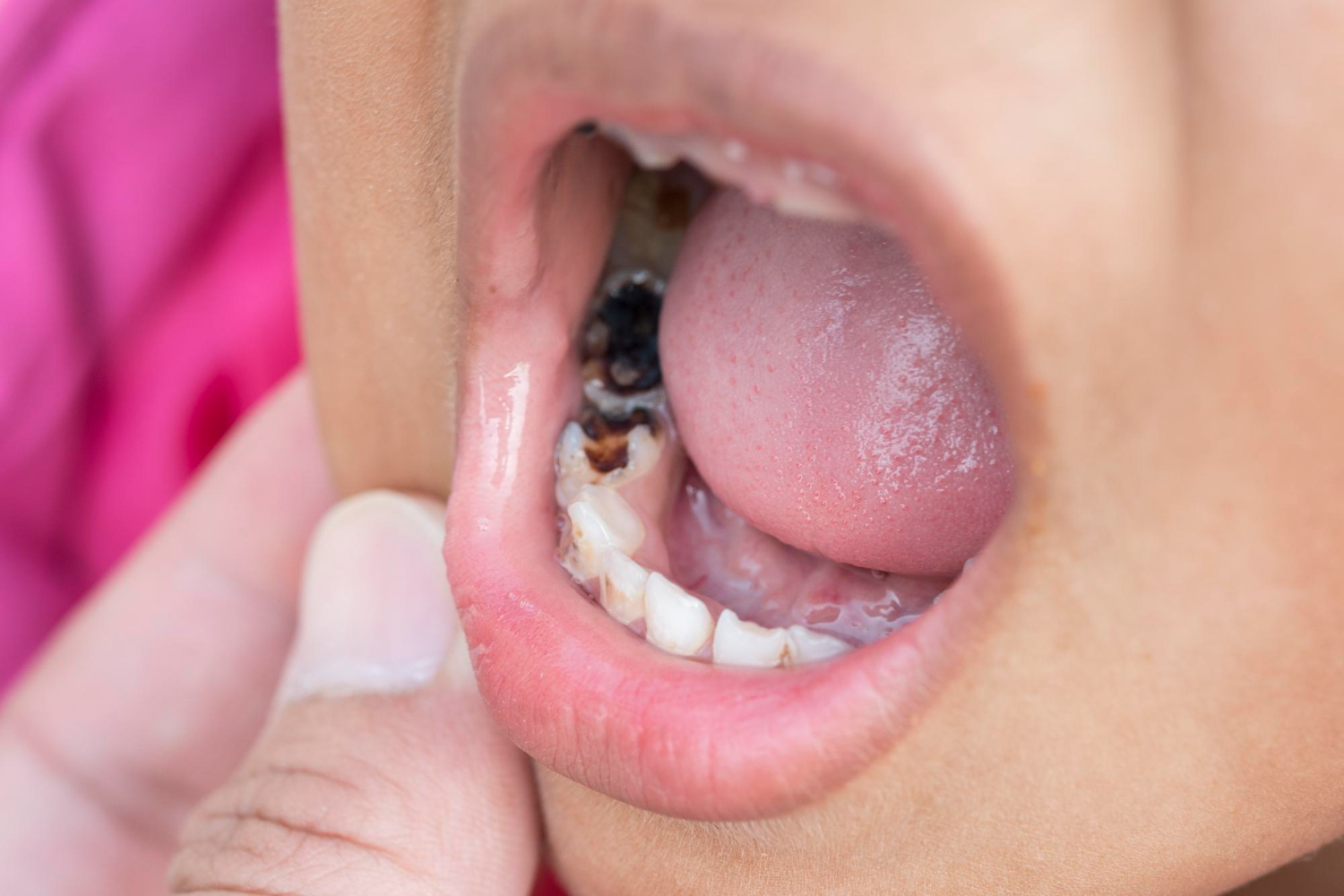Invisalign has transformed teeth straightening. Metal braces are no longer the only choice for creating a flawless smile. Invisalign’s transparent aligners are a tempting solution, providing flexibility and comfort. However, if you are on the verge of developing cavities, you may wonder if you can get Invisalign with cavities.
This blog article looks at the intricacies of Invisalign treatments, specifically how they work to cure cavities. It discusses the hazards of starting this orthodontic journey while fighting tooth decay, presents specific measures for dealing with the condition, and teaches you how to avoid cavities while in treatment.
Let’s dive into this critical topic and arm you with the knowledge you need for a successful Invisalign experience.
What Is Invisalign?
Invisalign is an orthodontic procedure that employs custom-made transparent plastic aligners to straighten teeth. Unlike traditional braces, which use brackets and wires, Invisalign aligners are removable and practically invisible, making them a popular choice for adults and teenagers seeking a more discreet solution to attain a straighter smile.
According to the American Association of Orthodontists, almost 1.5 million patients have been treated with transparent aligners such as Invisalign in recent years. The procedure entails developing a 3D digital model of your teeth, from which a customized treatment plan is developed—typically culminating in a series of aligners that you change every one to two weeks.
While this approach is highly efficient, it requires dedication to oral care and frequent dental examinations.
Want to know more about how Invisalign can transform your smile? Check out our comprehensive guide to Invisalign today!
Can You Get Invisalign With Cavities?
In general, it is not recommended to begin orthodontic treatment with unresolved dental concerns such as cavities. While many orthodontists may consider beginning treatment for minor dental issues, significant tooth rot requires prompt care before proceeding with Invisalign.
So, do you have to get cavities filled before Invisalign? Well, it is highly recommended. Starting this path without first treating dental cavities can lead to difficulties as the aligners create an environment that exacerbates the decay process. Thus, it is critical to visit with your orthodontist and dentist to assess your oral health before initiating treatment.
Risks of Getting Invisalign With Cavities
Maintaining good dental health before getting Invisalign is critical to avoid the following health risks:
-
Gum Irritation and Oral Discomfort
One of the main concerns about wearing Invisalign aligners is the possibility of gum inflammation. If you have cavities, the presence of decay might exacerbate your discomfort since the aligners may apply more pressure to weaker parts of your teeth.
As a result, you may feel bleeding gums, sensitivity, or general oral discomfort—far from ideal conditions for your orthodontic journey.
-
Potential for Worsening or New Cavities
To be successful, the aligners must be worn approximately 22 hours each day, and if not removed and cleaned correctly, they can trap food particles and germs against the teeth. This can increase the risk of deterioration, particularly if existing cavities remain untreated.
While it may seem that Invisalign causes cavities, the frequency of new cavities may increase because of a lack of good dental hygiene during the treatment.
-
Risk of Allergic Reactions & Adverse Effects
Although it’s rare, you may experience adverse responses to the materials used in aligners. Suppose you have pre-existing dental diseases or cavities that need to be treated. In that case, there may be a higher risk of affecting enamel strength and, as a result, the efficacy of the aligners.
What Should You Do if You Develop Cavities With Invisalign?
If you develop cavities during your Invisalign treatment, you must address them immediately in the following ways:
-
Address Cavities Quickly During Invisalign
If you see signs of a cavity, contact your orthodontist right away. They are in the most significant position to assess the problem and advise you through the treatment process.
-
Dental Fillers for Cavity Treatment
If you need fillings, the good news is that dentists can typically accomplish the procedure swiftly and efficiently. Minor fillings assist in restoring tooth integrity while enabling you to continue using your aligners as long as they are correctly fitted.
-
Invisalign Trays for Small Fillings
Small dental fillings usually do not influence the fit of your Invisalign trays. To avoid difficulties during treatment, all dental procedures must be conducted in accordance with the aligner design. Your orthodontist can consider this during your regular assessments.
-
Significant Tooth Restoration and Treatment Revision
Significant dental procedures, such as a crown or root canal, may necessitate a stop in your aligner therapy. Your orthodontist may need you to perform dental repairs before beginning your Invisalign treatment.
-
Make Timely Impressions to Avoid Delays
The effectiveness of your Invisalign treatment is dependent on receiving impressions and health checks on schedule. If cavities develop, it is critical to arrange repairs as soon as possible to prevent delaying any future alignment adjustments.
How Can You Avoid Cavities With Invisalign?
Prevention is the best medicine, and this phrase definitely applies to Invisalign treatment. Here are a few good strategies:
-
Clean Your Trays
Clean your aligners on a regular basis to reduce the risk of cavities. To keep germs at bay, brush and rinse them once a day with a soft soap or the cleaning technique advised by your orthodontist.
-
Eat & Brush Carefully
You must take out your aligners before eating or drinking anything other than water. Brush your teeth afterward before reinserting the aligners to avoid trapping food particles.
-
Consume Just Water
Drink only water while wearing your aligners. Liquids such as soda or coffee can increase the risk of cavities and discolor both your teeth and aligners.
-
Oral Care Routine
Maintain a consistent dental care practice, including frequent brushing and flossing, which is made more accessible by the aligner’s removable design. This procedure is critical in reducing bacteria accumulation, which reduces the incidence of cavities.
The path of teeth straightening with Invisalign should not be burdened with concerns about cavities. It is critical to prioritize your oral health beforehand. You may start your Invisalign adventure with confidence if you repair any existing cavities and maintain good dental hygiene.
If you are contemplating Invisalign or are already getting treatment and are concerned about cavities, contact us at Thurman Orthodontics right away.
We can provide you with personalized guidance and solutions to keep your smile healthy and beautiful.
Remember, your dental health is paramount—not only for the effectiveness of your Invisalign treatment but for your overall well-being.
FAQs
-
How do cavities influence Invisalign treatment?
Unresolved cavities can cause discomfort, deteriorate tooth health, and even a pause in treatment.
-
How should I proceed if I have cavities and want Invisalign?
Before commencing treatment, see your dentist or orthodontist right away to address any cavities.
-
What should I do if I find a cavity while wearing Invisalign?
Contact your orthodontist immediately to discuss the symptoms and identify the next steps in therapy.

Dr. Brian Thurman has spent his entire life enjoying all the beauty that California has to offer. A Fresno native, he still escapes to the ocean or the mountains whenever his busy schedule allows. Driven by his love for natural beauty, Dr. Thurman enjoys creating beautiful smiles and healthy bites that last a lifetime. He is proud to be the only Ivy League trained Orthodontist in the Fresno/Clovis area.

